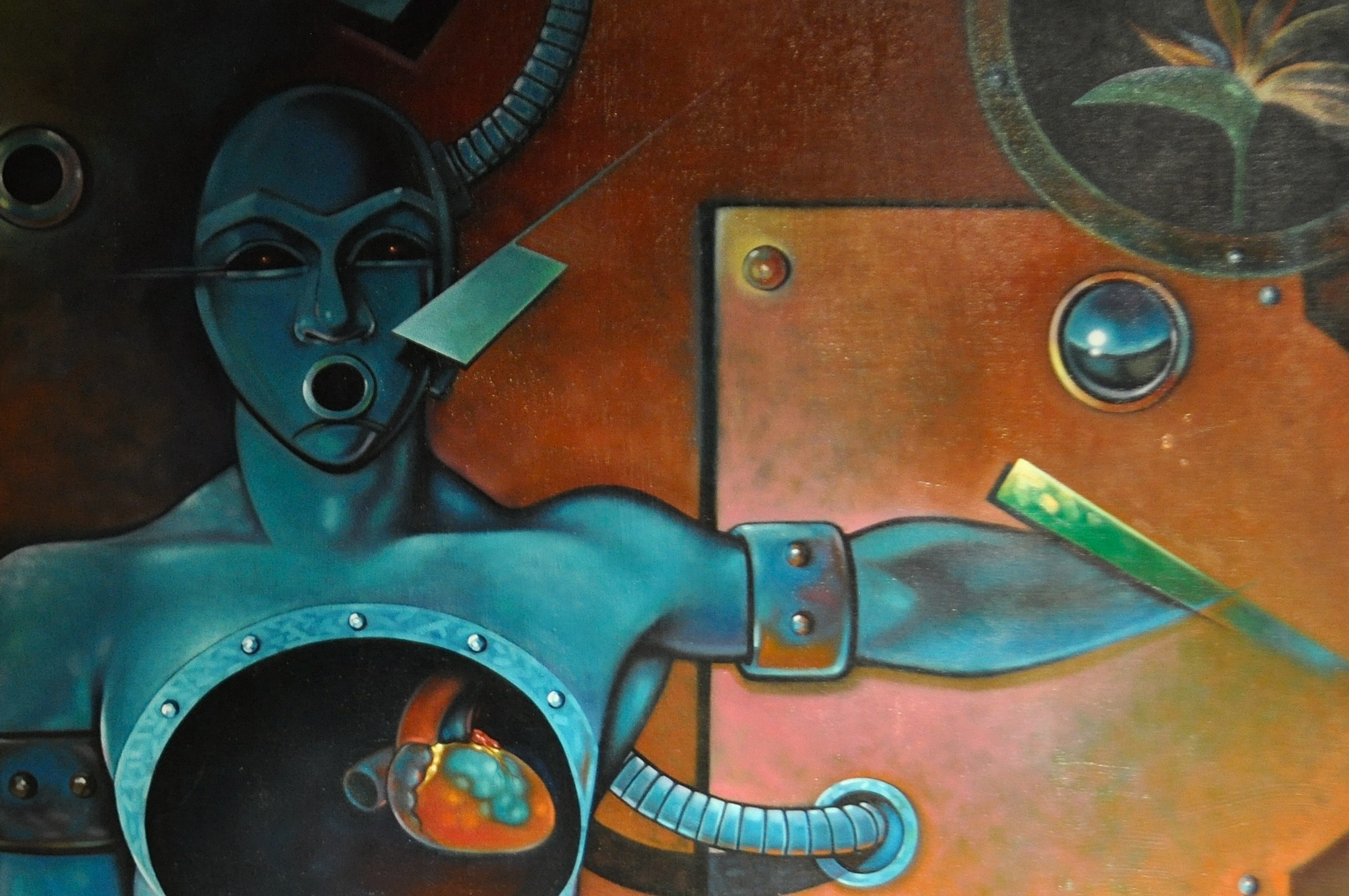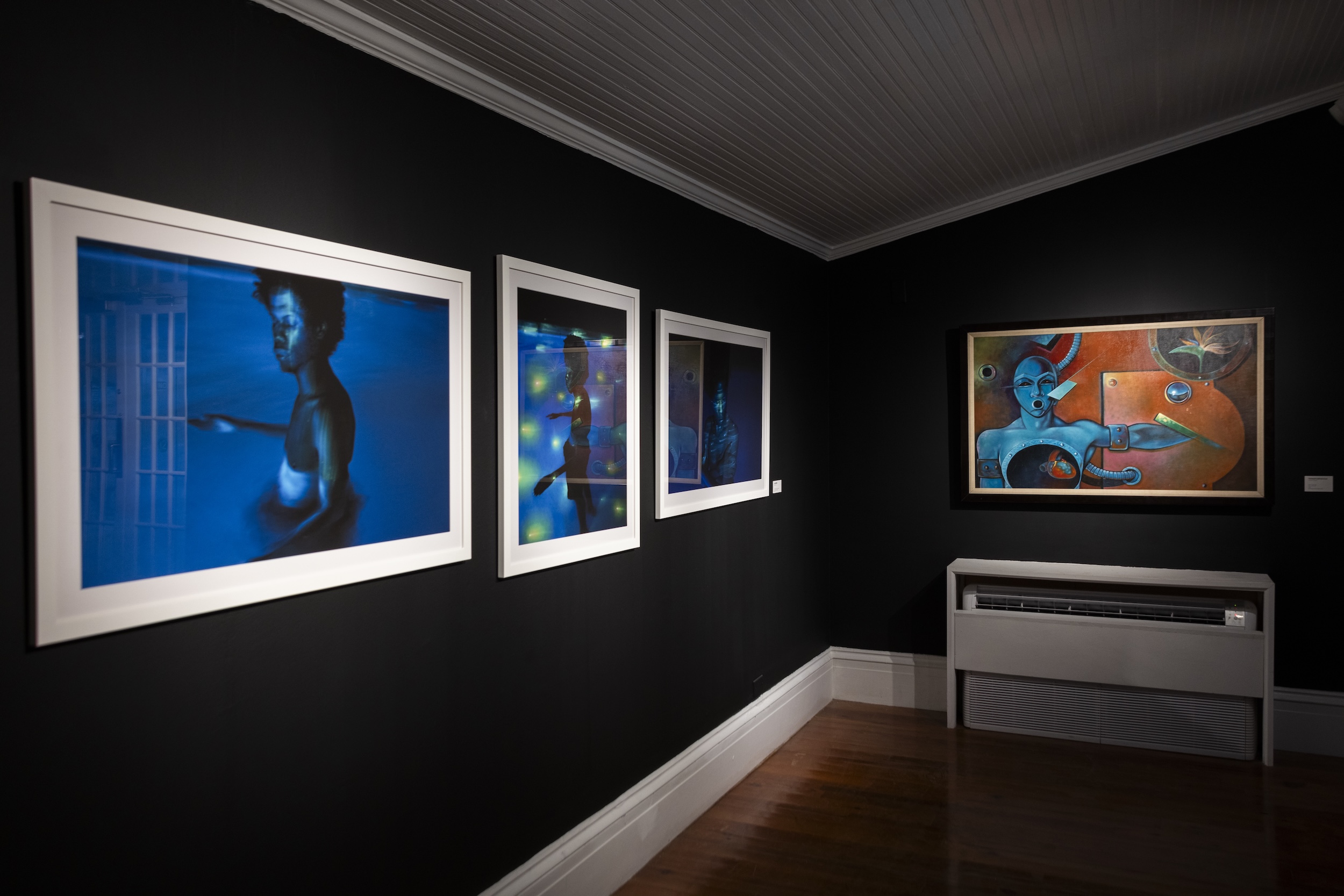From the Collection & Into the Void: Transformation (1987) by Jolyon Smith

When I first started working at the National Art Gallery two years ago, Richardo Barrett, the curatorial manager, asked me to help with organising the collection for an exhibition called The Nation/The Imaginary, a survey show that ran for an entire year. As we sifted through the work, I discovered a new favourite piece: Jolyon Smith’s Transformation, painted in 1987.
I love the piece. I am delighted at how strange it is, and the sheer mastery of the technique: the dry brush method on the canvas gives the painting a soft touch while the balance of colour communicates the robot’s coldness. I also love the robot’s stare as he reaches for the promise of the bird of paradise in the distance. When I went to Richardo to gush about how much I love the work, he mirrored my enthusiasm: and thus, the inspiration for the National Exhibition 11 was born.

Held every two years, the National Exhibition (NE) is a space for contemporary Bahamian artists to show new works that reflect the current ethos of our community, and honours work that is grounded in the advancement of practice, dialogue, and social engagement. When Richardo and I were considering the theme for the eleventh National Exhibition two years ago, we wanted to highlight the forward movement of contemporary Bahamian art and sought to encourage artists to think about our future as creatives in a nation that is currently negotiating its survival in this new ecological reality.
Jolyon’s piece exemplified this thinking. The piece is futuristic in content: it is a robot caricature on what looks like a ship. When you first look at the piece, you notice that the robot’s heart is disconnected, and the bird of paradise is outside of the ship, behind glass; something, it seems, that the robot is reaching out to. These symbols communicate that the robot is possibly devoid of connection even though he desires to connect to something real – a message that I was extremely interested in understanding more about. Richardo had the wonderful idea to speak to Jolyon to learn more about the piece, and in October of 2023, Richardo, Jolyon, and I talked about it.

The conversation was illuminating. Jolyon told us that the inspiration for the painting came from considering his own livelihood in the Caribbean and the state of humanity in general. He affirmed that yes, the figure is devoid of connection, and is in a constant state of reaching out to fill the void, as symbolised by the floating heart and empty chest. The pipes that connect to the robot’s head, Jolyon stated, represent the many ideas one is fed by the “machine” that keeps you entertained and separated from true connection. This machine can be thought of as capitalism, colonialism, racism, and all the other “isms” that disrupt true love and connection for humanity. And my suspicion was correct—the bird of paradise flower is meant to symbolise hope beyond these ideas that separate us, and survival of humanity when we connect to ourselves and the environment around us.
It is from this conversation that Richardo and I settled upon the title INTO THE VOID. We wanted to use this NE to explore this idea of “connection” as a process of survival. In our own history, how do we connect with each other despite the “isms” that we live through? How do we survive? What can that look like in the Caribbean, despite our changing social and environmental landscape? This year, 21 artists will explore themes that Jolyon outlined in Transformation and attempt to answer these questions. NELEVEN: INTO THE VOID will open its doors for people to explore the new innovative ways that artists imagine how we connect and survive on these islands in the future.
Letitia Pratt is Associate Curator at the National Art Gallery of The Bahamas (NAGB). In addition to her curatorial work, she is a writer and poet with an MFA in Writing from the School of the Art Institute of Chicago. Pratt has held positions as a writer and curator at the D’Aguilar Art Foundation and SITE Galleries at the School of the Art Institute of Chicago. Her creative writing has been featured in the NAGB’s NE8 and NE9, and published in esteemed literary journals, including WomanSpeak, Bookmarked: PREE New Caribbean Writing, and The Caribbean Writer.
Related
